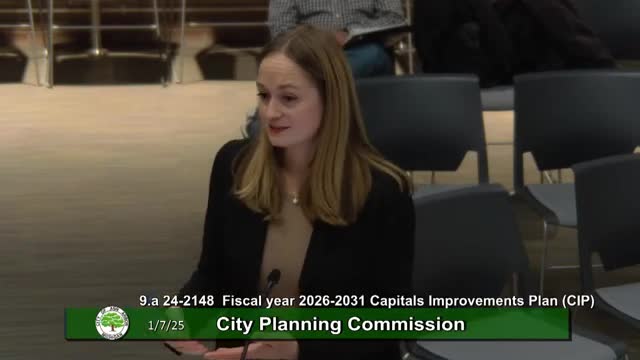City Council debates sidewalk project amid community safety concerns and planning conflicts
January 07, 2025 | Ann Arbor City, Washtenaw County, Michigan
This article was created by AI summarizing key points discussed. AI makes mistakes, so for full details and context, please refer to the video of the full meeting. Please report any errors so we can fix them. Report an error »

During the recent Ann Arbor City Planning Commission meeting on January 7, 2025, significant discussions centered around the prioritization of sidewalk projects and the implications of community feedback on urban planning. The meeting highlighted the tension between public opposition to certain infrastructure developments and the necessity of these projects for pedestrian safety.
Commissioner Disch raised concerns about the influence of community pushback on the decision-making process, particularly regarding a proposed sidewalk on Sunset. Disch emphasized that while public input is valuable, it should not halt essential projects, especially when safety is at stake. The discussion revealed a pattern where vocal opposition from a small group could disproportionately affect planning outcomes, potentially undermining the city's commitment to improving pedestrian infrastructure.
The conversation also touched on the broader context of the Capital Improvement Plan (CIP), with several commissioners questioning the removal or postponement of critical projects, including a bike underpass. The urgency of approving the CIP was underscored, as delays could hinder the city's ability to allocate funds effectively for upcoming projects. However, there was a consensus that the commission should not simply rubber-stamp the plan but instead assert its agency in advocating for community safety and infrastructure needs.
Commissioner Weich pointed out that the commission's role is to provide a balanced perspective on urban planning, ensuring that safety concerns are adequately addressed. The discussion highlighted the need for a more transparent and engaging process for community input, suggesting that future meetings should facilitate better dialogue between city planners and residents.
In conclusion, the meeting underscored the ongoing challenges faced by the Ann Arbor City Planning Commission in balancing community feedback with the imperative of urban development. As the commission moves forward, it will need to navigate these complexities to ensure that essential infrastructure projects are prioritized, ultimately enhancing safety and accessibility for all residents. The next steps will involve reevaluating the current CIP and considering modifications that reflect the community's needs while maintaining a focus on safety and effective urban planning.
Commissioner Disch raised concerns about the influence of community pushback on the decision-making process, particularly regarding a proposed sidewalk on Sunset. Disch emphasized that while public input is valuable, it should not halt essential projects, especially when safety is at stake. The discussion revealed a pattern where vocal opposition from a small group could disproportionately affect planning outcomes, potentially undermining the city's commitment to improving pedestrian infrastructure.
The conversation also touched on the broader context of the Capital Improvement Plan (CIP), with several commissioners questioning the removal or postponement of critical projects, including a bike underpass. The urgency of approving the CIP was underscored, as delays could hinder the city's ability to allocate funds effectively for upcoming projects. However, there was a consensus that the commission should not simply rubber-stamp the plan but instead assert its agency in advocating for community safety and infrastructure needs.
Commissioner Weich pointed out that the commission's role is to provide a balanced perspective on urban planning, ensuring that safety concerns are adequately addressed. The discussion highlighted the need for a more transparent and engaging process for community input, suggesting that future meetings should facilitate better dialogue between city planners and residents.
In conclusion, the meeting underscored the ongoing challenges faced by the Ann Arbor City Planning Commission in balancing community feedback with the imperative of urban development. As the commission moves forward, it will need to navigate these complexities to ensure that essential infrastructure projects are prioritized, ultimately enhancing safety and accessibility for all residents. The next steps will involve reevaluating the current CIP and considering modifications that reflect the community's needs while maintaining a focus on safety and effective urban planning.
View full meeting
This article is based on a recent meeting—watch the full video and explore the complete transcript for deeper insights into the discussion.
View full meeting
